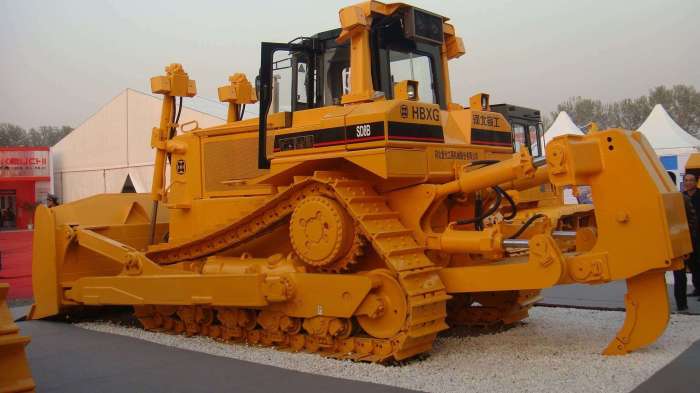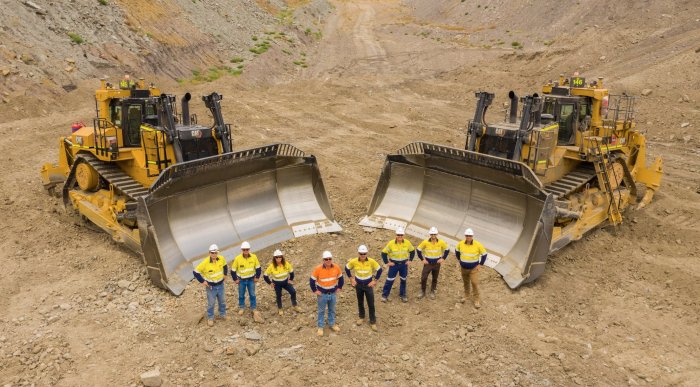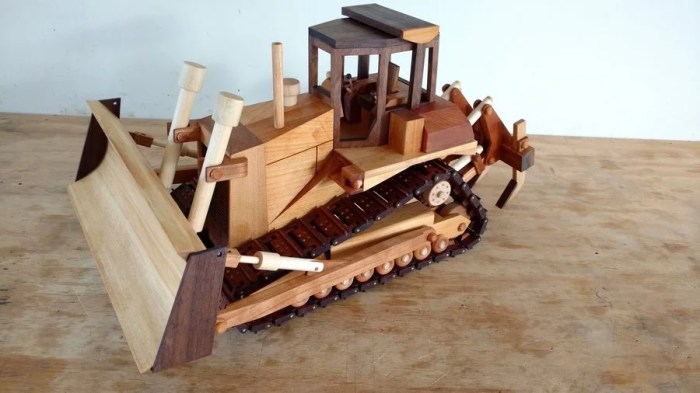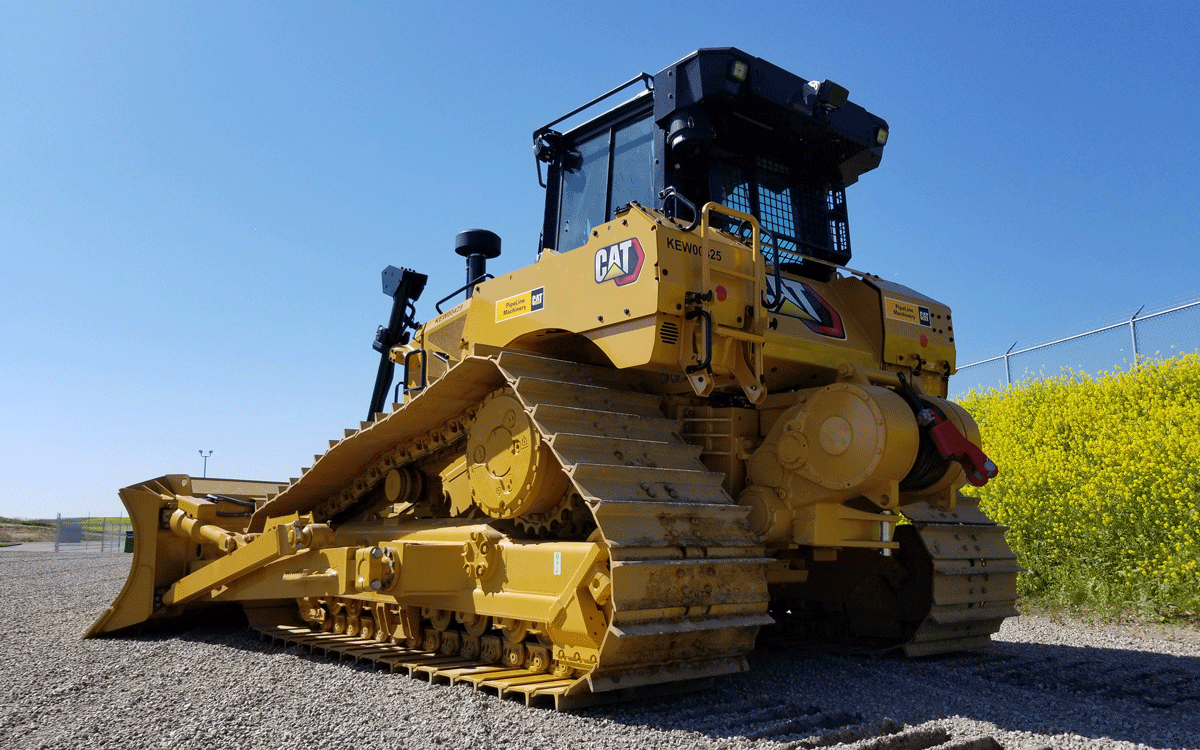High track vs low track dozer – In the realm of earthmoving, the choice between high track and low track dozers is a crucial one. Each type offers unique advantages and drawbacks, making it essential to understand their differences before making a decision. From construction sites to mining operations, the type of dozer you choose can significantly impact productivity, efficiency, and overall success.
Let’s delve into the world of high track vs low track dozers and uncover the factors that will help you make an informed choice for your specific needs.
Introduction

High track and low track dozers are two distinct types of bulldozers, each designed for specific purposes in construction and earthmoving. High track dozers, also known as elevated sprocket dozers, feature tracks that are positioned higher than the final drive, providing increased ground clearance and stability.
Low track dozers, on the other hand, have tracks that are positioned lower, closer to the ground, resulting in a lower profile and greater maneuverability.
Purpose and Usage
High track dozers are typically used in applications where ground clearance is crucial, such as working on uneven terrain, slopes, or soft ground conditions. Their elevated tracks allow them to navigate obstacles and maintain stability even on challenging surfaces. Low track dozers, with their lower profile and enhanced maneuverability, are ideal for tasks that require precision and agility, such as grading, backfilling, and working in confined spaces.
They offer better visibility and control, making them suitable for applications where accuracy and precision are paramount.
Features and Specifications

High track and low track dozers exhibit distinct characteristics in their design and capabilities. These variations stem from their intended applications and the specific tasks they are engineered to perform.
The following sections delve into the key differences between these two types of dozers, exploring their features, specifications, and how these variations impact their performance in various work environments.
Weight and Size
High track dozers generally have a heavier weight and larger size compared to low track dozers. This increased weight provides them with greater stability and traction, enabling them to handle heavier loads and work on uneven or soft terrain.
Low track dozers, on the other hand, are designed to be more compact and maneuverable. Their lighter weight allows them to navigate tight spaces and work in areas where larger dozers may struggle to access.
Whether you’re a pro at high track vs low track dozer or just starting to learn, it’s always helpful to brush up on the basics. That’s why we recommend checking out the geometry unit 1 practice test . This free online resource is a great way to test your knowledge and identify areas where you need more practice.
Once you’ve mastered the basics, you’ll be able to tackle any high track vs low track dozer problem with confidence.
Power
High track dozers typically possess more powerful engines than low track dozers. This additional power enables them to tackle demanding tasks such as heavy-duty earthmoving, land clearing, and construction projects.
Low track dozers, while having less power, are often equipped with efficient engines that optimize fuel consumption and reduce operating costs. Their smaller size and weight also contribute to their overall fuel efficiency.
Undercarriage Design
The undercarriage design of high track and low track dozers varies significantly. High track dozers feature a robust undercarriage with wide tracks and a longer track base. This configuration provides them with increased ground clearance and stability, making them suitable for rough and uneven terrain.
Low track dozers, in contrast, have a narrower track base and a lower ground clearance. Their undercarriage is designed for maneuverability and speed, enabling them to navigate obstacles and work in confined spaces.
Applications: High Track Vs Low Track Dozer

High track and low track dozers are specialized machines used in various applications, each with its advantages and disadvantages. Understanding their specific applications and capabilities is crucial for selecting the right dozer for the job.
High track dozers, with their elevated tracks, provide increased ground clearance and stability on uneven terrain. They are commonly used in applications such as:
- Land clearing and deforestation
- Road construction and maintenance
- Mining and excavation
- Pipeline construction
Low track dozers, on the other hand, have lower tracks that provide better traction and flotation on soft or sandy surfaces. They are often used in applications such as:
- Agricultural land preparation
- Snow removal
- Beach and shoreline maintenance
- Environmental restoration projects
Advantages of High Track Dozers
- Increased ground clearance for uneven terrain
- Enhanced stability on slopes and hillsides
- Better visibility for the operator
- Reduced ground pressure for sensitive surfaces
Disadvantages of High Track Dozers
- Higher center of gravity, making them more susceptible to rollovers
- Reduced traction on soft or sandy surfaces
- More difficult to maneuver in tight spaces
Advantages of Low Track Dozers, High track vs low track dozer
- Improved traction and flotation on soft surfaces
- Lower center of gravity for increased stability
- Better maneuverability in tight spaces
- Reduced ground disturbance
Disadvantages of Low Track Dozers
- Lower ground clearance for uneven terrain
- Reduced visibility for the operator
- Higher ground pressure on sensitive surfaces
Performance and Efficiency

When evaluating the performance and efficiency of high track and low track dozers, several factors come into play, including terrain conditions, operator skill, and maintenance practices. Here’s a comparison of their performance characteristics and the key factors influencing their productivity and fuel consumption.
High track dozers typically exhibit superior performance in challenging terrain, owing to their increased ground contact area and enhanced traction. This makes them more suitable for tasks such as land clearing, excavation, and heavy-duty construction projects. On the other hand, low track dozers excel in applications requiring high mobility and maneuverability, making them ideal for tasks such as grading, backfilling, and landscaping.
Factors Affecting Productivity and Fuel Consumption
- Terrain Conditions:The type of terrain significantly impacts the performance and efficiency of dozers. High track dozers perform better on soft, uneven, or steep terrain, while low track dozers are more suited for firm, level surfaces.
- Operator Skill:The skill and experience of the operator can greatly influence the productivity and fuel consumption of dozers. Skilled operators can optimize machine settings and techniques to enhance performance and reduce fuel usage.
- Maintenance Practices:Regular maintenance and timely repairs are crucial for maintaining optimal performance and fuel efficiency. Proper maintenance ensures that the machine is operating at its peak condition, minimizing downtime and reducing fuel consumption.
Maintenance and Operating Costs

Understanding the maintenance and operating costs associated with high track and low track dozers is crucial for making informed decisions about your equipment investment. These costs can vary significantly, so it’s essential to consider the long-term implications before purchasing.
The maintenance and operating costs of high track and low track dozers differ primarily in terms of repair and replacement costs, as well as fuel and labor expenses.
Repair and Replacement Costs
High track dozers typically have higher repair and replacement costs compared to low track dozers. This is because the undercarriage system of high track dozers is more complex and prone to wear and tear. The tracks themselves, as well as the idlers, rollers, and sprockets, require regular maintenance and replacement.
Low track dozers, on the other hand, have a simpler undercarriage system, resulting in lower repair and replacement costs. The tracks are typically made of rubber or steel, which are less susceptible to damage than the steel tracks used in high track dozers.
Fuel and Labor Expenses
High track dozers generally consume more fuel than low track dozers due to their heavier weight and more powerful engines. This increased fuel consumption can lead to higher operating costs over time.
Labor expenses can also vary between high track and low track dozers. High track dozers often require more skilled labor for maintenance and repairs, which can result in higher labor costs.
Operator Comfort and Safety

The comfort and safety of the operator are crucial factors to consider when choosing between high track and low track dozers. Both types offer various features to ensure operator well-being and minimize risks on the job site.
High track dozers typically feature elevated cabs that provide panoramic views of the work area, enhancing visibility and reducing blind spots. They often come equipped with ergonomic seats with adjustable lumbar support and armrests, ensuring comfort during extended periods of operation.
Additionally, these dozers may have climate-controlled cabins, minimizing operator fatigue and discomfort in extreme weather conditions.
Noise Levels
Noise levels play a significant role in operator comfort and long-term health. High track dozers often have lower noise levels than low track dozers due to the use of rubber tracks instead of steel tracks. Rubber tracks generate less noise and vibration, creating a quieter and more comfortable working environment for the operator.
Visibility
Visibility is essential for safe and efficient operation. High track dozers provide excellent visibility due to their elevated cabs and large windows. Operators can easily see the work area, reducing the risk of accidents and improving productivity.
Ergonomic Design
Ergonomic design is crucial for operator comfort and reduces the risk of fatigue and strain. High track dozers often feature adjustable controls, comfortable seating, and well-designed layouts, ensuring that operators can work comfortably and efficiently throughout the day.
Environmental Impact
The environmental impact of high track and low track dozers varies depending on the specific type of machine, the terrain it is operating on, and the duration of operation. However, both types of dozers can have a significant impact on the environment.
Emissions
High track dozers typically produce higher emissions than low track dozers due to their larger engines and higher fuel consumption. Emissions from dozers can include particulate matter, nitrogen oxides, and carbon monoxide. These emissions can contribute to air pollution and climate change.
Noise Pollution
Dozers can also generate significant noise pollution. High track dozers tend to be noisier than low track dozers due to their louder engines and the greater amount of ground disturbance they create. Noise pollution from dozers can disrupt wildlife and nearby communities.
Ground Disturbance
Both high track and low track dozers can cause significant ground disturbance, which can damage vegetation and soil. High track dozers typically cause more ground disturbance than low track dozers due to their wider tracks and higher ground pressure. Ground disturbance from dozers can lead to erosion, sedimentation, and loss of habitat for wildlife.
Question & Answer Hub
What are the key differences between high track and low track dozers?
High track dozers have elevated tracks that provide increased ground clearance and stability, while low track dozers have lower tracks that offer better flotation and maneuverability.
Which type of dozer is better for rough terrain?
High track dozers are more suitable for rough terrain due to their higher ground clearance and enhanced stability.
How do the operating costs compare between high track and low track dozers?
Low track dozers generally have lower operating costs due to their lighter weight and smaller track components.
Which type of dozer is more fuel-efficient?
Low track dozers are typically more fuel-efficient than high track dozers because they require less power to move.